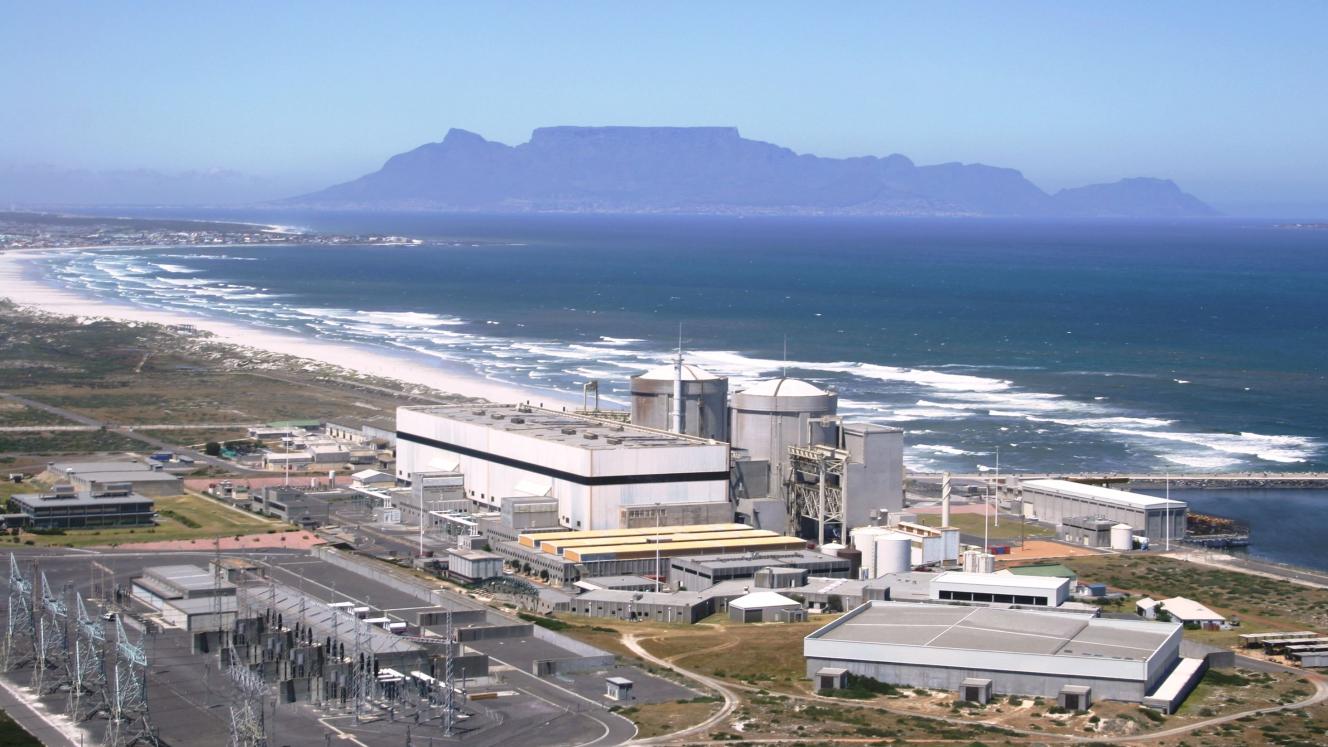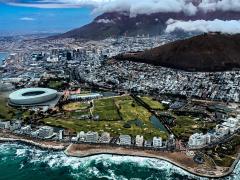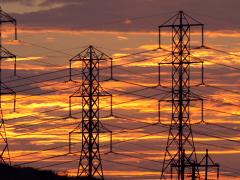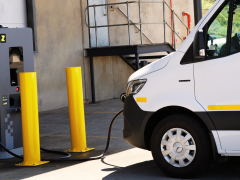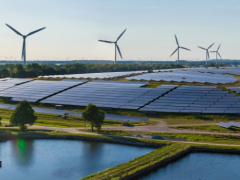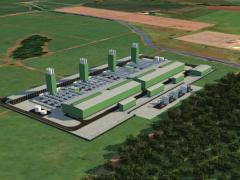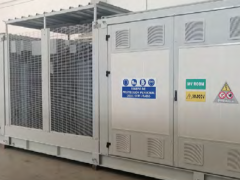Information from Koeberg Alert Alliance
All eyes were on Minister Gwede Mantashe today (18 May 2021) to see what he had to say about nuclear power issues as he presented the budget for his Department of Mineral Resources and Energy (DMRE). In a surprising move, he did not mention the subject.
However, last week on 12 May addressing the National Council of Provinces (NCOP), Mantashe responded to questions about the Koeberg nuclear power plant. According to academics, activists and organisations, Mantashe’s answers contained disinformation that implied that Koeberg’s 20-year life extension is approved, and that the cost of the electricity it produces is a fraction of what it actually is.
Organisation Undoing Tax Abuse (OUTA) Parliamentary Advisor, Liz McDaid, says, “The nuclear industry has never been associated with transparency. Nevertheless it was surprising that despite the fact that 14% of the DMRE budget is spent on nuclear power related issues, the minister did not mention the word nuclear once in his 45 minute speech.”
Mantashe’s previous inaccuracies
When answering a question from the floor last week on 12 May, Mantashe stated that electricity from Koeberg costs 40c per kWh. Eskom’s own presentation in March 2021 estimated that the cost of electricity from Koeberg will be five times higher at R2 per kWh.
Mantashe also spoke about the proposed life extension of Koeberg as if it was a done deal, saying it is “well underway”, whereas Eskom has not even applied yet to the National Nuclear Regulator (NNR) for a licence to do so.
When asked directly about the safety implications of the deterioration of Koeberg’s containment buildings, Mantashe said he is “hoping that it will continue to be safe”. But when asked if he would take responsibility for the plant being safe, he was quick to pass on that responsibility to the Department of Public Enterprises (DPE).
Mantashe also described Koeberg as reliable, skipping over the fact that one of the two reactors has been out of commission since January, and both reactors have only been working for 70% of the time over their lifetime.
Koeberg’s electricity costs in dispute
During a presentation in March 2021, Eskom presented a slide representing energy costs from a German study, with an overlay showing that Koeberg will produce electricity at R2000/MWh. This is equivalent to R2/kWh, five times higher than the 40c quoted by Mantashe on Wednesday.
“Why does the minister find it necessary to give incorrect information about the costs of Koeberg?” asks Koeberg Alert Alliance spokesperson, Peter Becker. “If nuclear power was really cheap and safe, why not just tell the truth?”
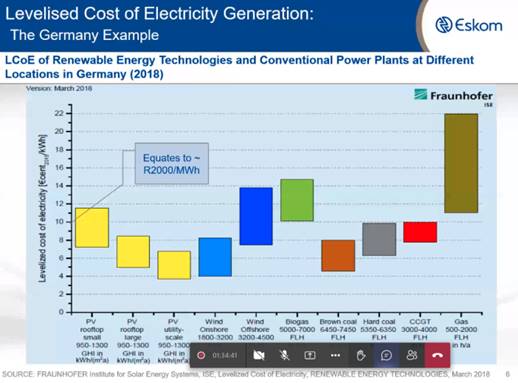
Koeberg’s life extension has not been approved
The NNR is the only body which can grant a licence for Koeberg’s life extension and Eskom has not yet applied for a licence. Before this licence can be granted, the NNR is obliged to have a period of public consultation. Much like with the Karpower ships, Mantashe appears to be trying to present the life extension of Koeberg as if it is a done deal.
“There are several safety concerns at Koeberg,” says Becker. “The main ones are the unexpectedly rapid corrosion of the concrete of the containment buildings, and the very old design which does not have any of the safety features that were added to more modern designs in response to the Chernobyl and Fukushima nuclear disasters.”
It was announced in April 2021 that Becker will be appointed to the board of the NNR, although there have been delays in formalising his appointment, which can only be done by Mantashe.
“It is incumbent on the NNR to look very carefully at these issues and to either impose conditions on a life extension or to refuse permission if it cannot be done safely,” says Becker. “It is quite wrong of Minister Mantashe to say that the extension will be done.”
Richard Halsey, a researcher at the social and environmental justice organisation Project 90 by 2030, points to serious accountability issues surrounding the life extension of Koeberg. "What will the process cost? What effect will it have on the price of electricity generated from Koeberg? How does this compare to other options? Well, we have no idea because this information has not been made available, and this completely undermines any prospect of meaningful public participation," he says.
"If this really is the best option, then where is the evidence? What does the Minister or the Department have to hide?" says Halsey.
“There must be a public consultation process, including an Environmental Impact Assessment (EIA), on Koeberg's long-term extension,” says University of South Africa’s Political Sciences Professor, Jo-Ansie van Wyk. “Ideally, the NNR, Eskom, National Energy Regulator of South Africa (NERSA), parliament, the City of Cape Town, the Premier of the Western Cape, and the Ministers Mantashe and Gordhan should step up on this.
“Government may argue that public consultations and an EIA may not be legally required. Even so, it is morally the right thing to do and in alignment with the spirit of the constitution,” says Van Wyk.
Cracks in Koeberg’s safety
Responding to a question about safety at Koeberg, Mantashe said: "It is in the Western Cape. It does not have that history of massive disasters around it. We are hoping that it will continue to be safe, and I hope Eskom will continue maintaining that safety record of Koeberg."
“We all hope that Koeberg will continue to be safe,” says Becker. “But we would expect more than hope from a Minister who is pushing so hard for the life extension to go ahead.” It remains to be seen if the NCOP will repeat the question to the Minister of the DPE.
In response to a request under the Promotion of Access to Information Act, Eskom, after a long delay, released a heavily redacted report about the cracking and corrosion of the containment buildings. Becker is currently in the process of challenging this withholding of information in the courts.
“If it is so safe, why does Eskom find it necessary to refuse to release information from a 2018 report on the damage to the containment buildings?” asks Becker.
Koeberg’s reliability in question
Regarding reliability, Mantashe says that Koeberg “is not one of those plants which give us problems in terms of unreliability or power availability.” However, one of the reactors was shut down in January 2021 due to a leak and it is still not operational, so the plant currently produces only about 2% of Eskom’s national generating capacity.
“Koeberg has a lifetime energy availability factor of about 70%,” says Becker. “It is hard to see how this can be called reliable when it is down for nearly a third of the time. Would you call your car reliable if it was at the mechanic’s for over a week every month?”
Nuclear debate must be transparent
Nuclear power is a hotly debated topic and as the country is poised to make crucial decisions about its long-term energy future, it is essential that this is done in a transparent and honest way.
The secrecy around the damage at Koeberg, plus Mantashe’s combination of inaccurate information in response to direct questions and then silence on this major issue during his budget speech is not reassuring to the public.
Contact Peter Becker, Koeberg Alert Alliance, Tel 083 444-2083, peter@koebergalert.org
